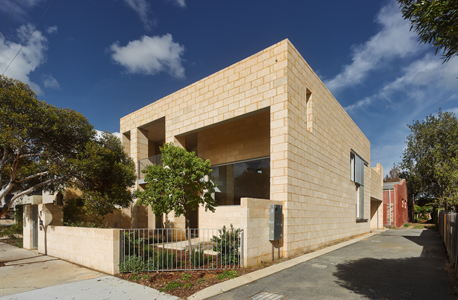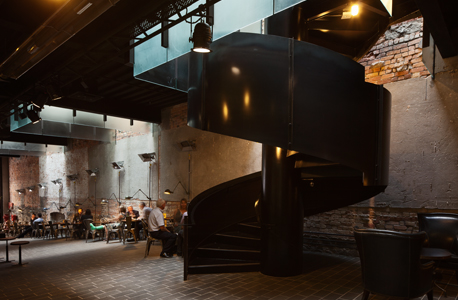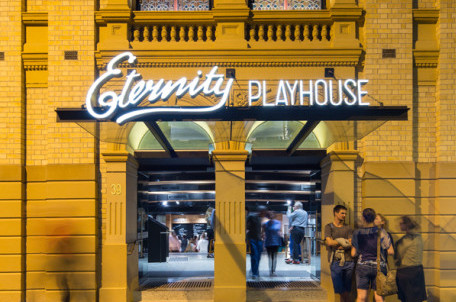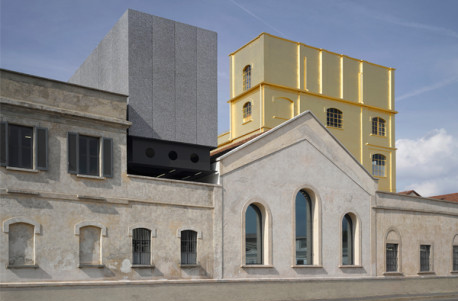
An interview with Lucinda Hartley of CoDesign Studio
An interview with Lucinda Hartley of CoDesign Studio
Share
Written by: Fenella Kernebone. Photography courtesy of CoDesign Studio.
Lucinda Hartley is co-founder and CEO of CoDesign Studio, a placemaking social enterprise that works with local communities to deliver low-cost improvements to their public spaces. Since 2010, CoDesign Studio has worked on more than 50 urban renewal projects. Fenella Kernebone speaks to Hartley about these community-minded initiatives and her unique approach to civic works.
Fenella Kernebone: The notion of working with local communities so that they are part of the design process when it comes to placemaking seems almost a given, but how has Australia embraced the ideals of tactical urbanism?
Lucinda Hartley: I think that the conversation around tactical urbanism, collaborative urbanism and placemaking has really matured in Australia in recent times. A couple of years ago the idea of getting a local community to create places might have seemed left field, whereas today this is becoming embedded in client briefs. What’s exciting about this is that I think there is a recognition that we need to do things differently. In our work at CoDesign Studio, we specialise in that kind of disruptive urban design.
FK: You have to approach this pretty carefully I imagine. You can’t just walk in there and say, ‘let’s do a pop-up’. What is the process that you undertake at CoDesign Studio?
LH: I think that one of the understandings around tactical urbanism is that it is about starting pop-up spaces and hoping that will be the fix to any problems. There is never a quick fix. Tactical urbanism provides a lens to reframe a problem. It’s an international methodology, but here in Australia across 50-odd projects we have developed a methodology based around four pillars that we think are required to really help to define more successful places and communities. To start with, it’s about putting people first. This might seem obvious, but it’s funny how often people are brought in as a sounding board to test ideas, rather than at the beginning. It’s not just about asking people what they think, but involving them in the process of co-creating their neighbourhood.
FK: When we talk about co-design and co-creation – who are those in a community who opt in and choose to participate in the design process?
LH: In traditional engagement processes very few people do opt in. In fact, councils would be happy if they got a two percent response rate, which is pretty small – five percent would be off the charts. People are very connected and engaged, just in different ways. The reason that we are interested in changing places, as part of an engagement process, such as running prototypes, experiments and physical place activations, is that it disrupts things so that you do get the attention from a range of people who might not usually participate.
A good example is a prototype for Dodds Street, as part of the Southbank Master Plan through the City of Melbourne and Arts Victoria, which was about closing a street and turning it into a park – a controversial thing to do in any Australian city. If you lose car parks the sky will fall. This project was about building a different conversation. We turned the street into a park for a couple of weeks, invited food vans and other retailers, who were interested in growing a business model in that area and programmed arts events and activities. The ultimate purpose, even though it made the street vibrant for a couple of weeks, was to test ideas and build a collective story about what the future park was going to be. It’s still a design process, but it is one that is co-created with the stakeholders.
FK: Much of this is about entering a space that is already established to engender community. What about for new developments, ones that don’t even have a human being in them yet?
LH: Absolutely. Wearing a different hat to CoDesign Studio, I am on the Ministerial Advisory Committee for the Fishermans Bend Urban Renewal Area. It is a reframe of the question when you’re working with a community that doesn’t exist yet. In those environments I see that the process is more about place evolution. When there isn’t a ‘community’ in place, decisions are largely made by the expert team. Often they are good decisions, but they are not necessarily personal decisions. Places can start to look very generic and samey. So the approach that we work with in a variety of contexts is to look at early activation sites, such as temporary community hubs and community engagement activities around people who have bought early off the plan. By using temporary spaces, whether it is a café out of a shipping container or a pop-up park, those places then become a hub to start to build community. I think that helps to add value to the particular brand or identity of the place because it is coming from a local, authentic voice, not something that has been completely master-planned right down to the fence colour.
You Might also Like




















